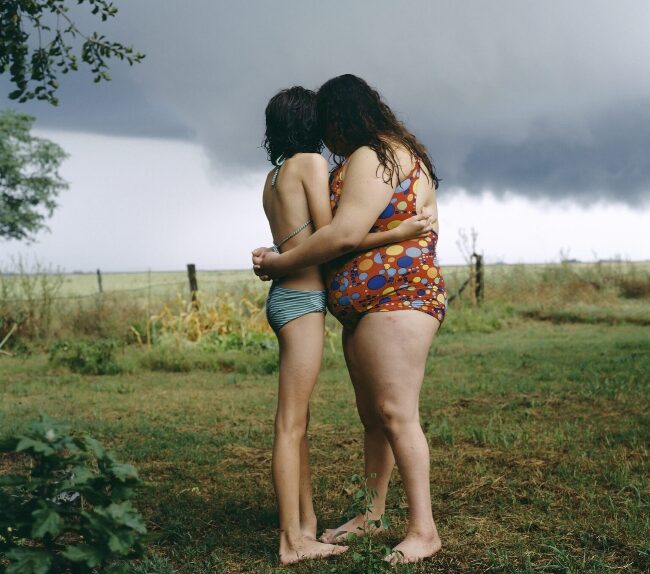We’re doing something a tad different this week. Last week we took a look at Alessandra Sanguinetti’s series On the Sixth Day ; this week we’re going to look at the same photographer, but a different series.
Sanguinetti photographed The Adventures of Guille and Belinda and the Enigmatic Meaning of Their Dreams during the same period as On the Sixth Day. The subjects–the two girls, Guille and Belinda–were cousins living on neighboring farms, the very same farms featured in On the Sixth Day. In effect, she was photographing two series at the same time, using essentially the same physical setting and taking her subjects from the same milieu, using two totally different approaches to explore totally different themes.
“I ignored them at first, as they would usually be getting in the way of my photographs. But one day I turned my attention towards them and let them stay in the frame.”
When she began the series, Guille was ten and Belinda, nine. The two girls couldn’t be more different physically; one is thin, one is chubby. But they shared an active imagination and a theatrical sense of playfulness that captured Sanguinetti’s attention. The discovery of these two spirited girls led Sanguinetti to a sort of artistic divergence; at the same time she was exploring the fundamentally pragmatic relationship of humans and livestock, Sanguinetti was also delving into the wonderful and peculiar friendship of two young girls isolated on farms in rural Argentina.
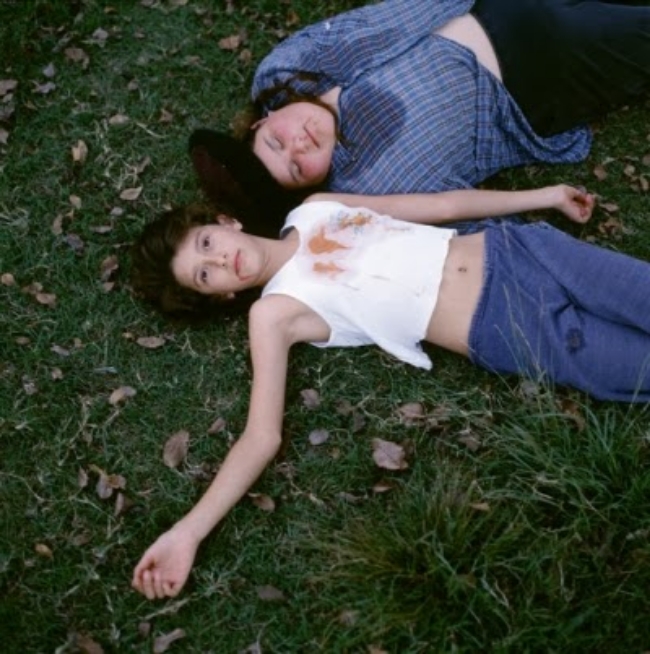
Because the series is so intimately tied to the two girls, this is a series in which the subjects have almost as much control over the process as the photographer. Many of the photographs show the girls in their daily lives, doing the things girls at that age common do–being bored and sullen at family gatherings, resignedly doing chores. But Sanguinetti also followed them as they engaged in imaginative bouts of “let’s pretend.”
The charm of this series relies entirely on Guille and Belinda, and their willingness not only to be relaxed and natural around Sanguinetti, but to allow her into their secret fantasy realm. With Sanguinetti’s help, the girls staged and acted out scenes from their imagination. Biblical scenes, scenes of domestic life, funerals and weddings, melodramatic scenes from bad movies and cheap romance novels. Scenes of drama and bliss, which are two of the main components in the lives of young girls. Scenes as far removed as possible from the real lives of two young girls living on isolated farms.
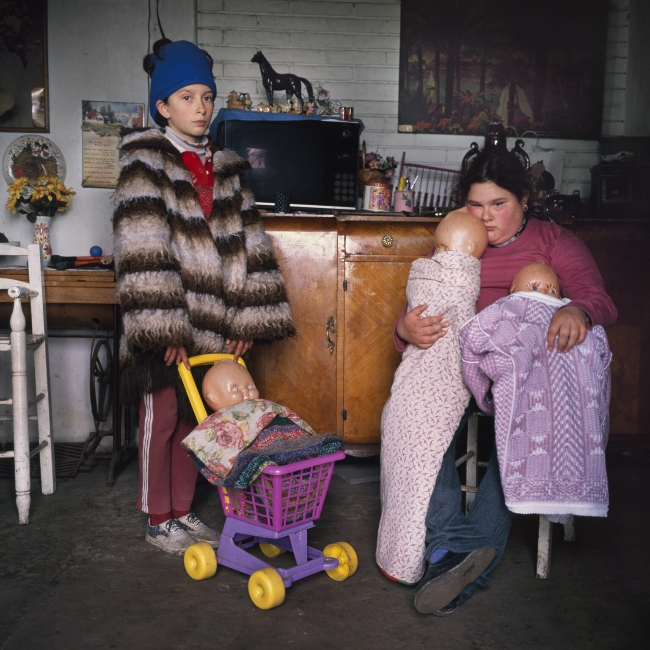
Initially, Sanguinetti just photographed the girls as they played. As time passed, though, she began to feel drawn into the play itself. She began to give them picture books and postcards to help spark their native imagination, and to provide props to supplement their play. She was careful, though, to always follow their lead.
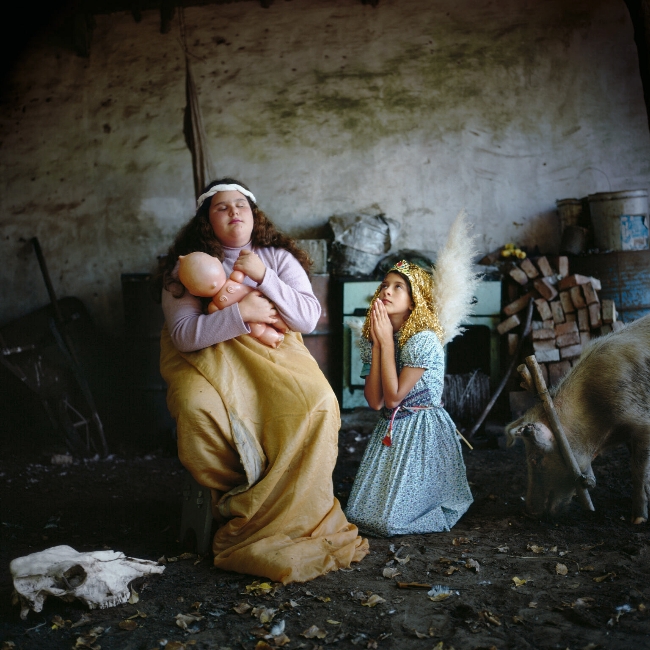
Sanguinetti photographed Guille and Belinda for a period of five years. Toward the end of that period, the two were beginning to change from young girls into young women.
“I have attempted to interpret the ending of their childhood by entering their imaginary paces, The time when their dreams, fantasies, and fears fuse seamlessly with real day-to-day life are ending, and the photographs I have made intend to crystallize this rapidly disappearing very personal and free space.”
The awareness that everything will soon change for Guille and Belinda imbues the series as a whole with a vague sense of sadness, a sadness that’s almost entirely invisible in the individual images. The skinny, awkward Belinda is growing into a thin, graceful young woman aware of her beauty; the chubby, confident Guille is transforming into a chubby, uncertain young woman who is also aware of Belinda’s beauty. In the fancies and fantasies of their youth, body image plays very little role; as they are increasingly confronted with a real world in which they will be judged in a large measure on their appearance rather than their minds, they seem reluctantly aware that the shape of their bodies will influence the shape of their futures.
The Adventures of Guille and Belinda and the Enigmatic Meaning of Their Dreams is more than just a study of two girls coming of age; it’s also a celebration of the innocence of youth as well as an acknowledgement that neither youth nor innocence lasts. It’s more than just a narrative about friendship; it’s also an examination of the cultural forces that influence and shape friendships.
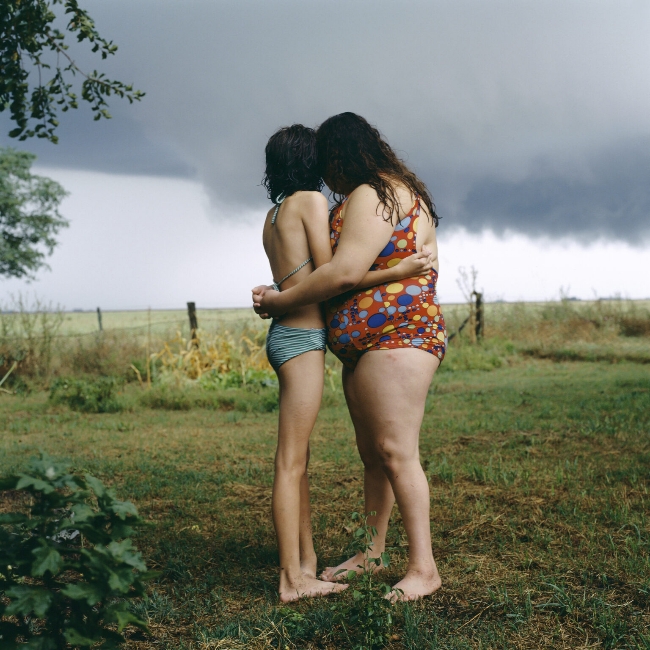
In the end, The Adventures of Guille and Belinda and the Enigmatic Meaning of Their Dreams is about two young friends who face an uncertain future and cling to each other as long and as tightly as they can. The friendship is more beautiful than the photographs, and the photographs are achingly beautiful.

